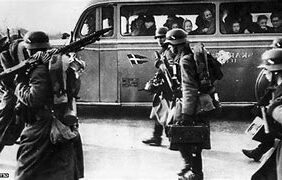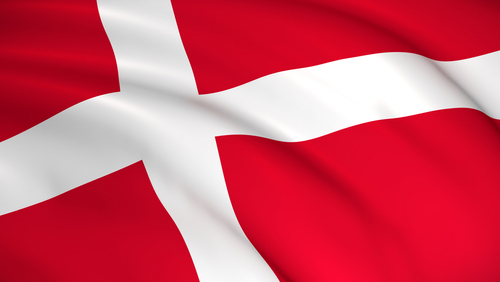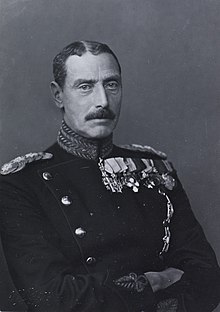Denmark
Grades 7+
 Rain beat against the tarp that covered the dory on the beach. Twelve-year-old Tetro Goldstein and his mother, father, and two-year-old sister huddled within the small boat. Tetro knew his father held a pistol. “We will shoot the Nazis,” his father had said, but Tetro knew otherwise. He and his family were Jews. His father would shoot the family, then himself. Death would be better than the living hell of the German camps.
Rain beat against the tarp that covered the dory on the beach. Twelve-year-old Tetro Goldstein and his mother, father, and two-year-old sister huddled within the small boat. Tetro knew his father held a pistol. “We will shoot the Nazis,” his father had said, but Tetro knew otherwise. He and his family were Jews. His father would shoot the family, then himself. Death would be better than the living hell of the German camps.
“See anything?” his father whispered.
Tetro peered through the small slight where the tarp wasn’t tight. The moonlight silhouetted Nazi soldiers up on the bluff. They swung their rifles to part the tall seagrass in case Jews hid there.
A soldier in charge motioned the others to head down the bluff.
The boat was at the bottom of the bluff. The tide was coming in. Wavelets lapped against hull.
Tetro squinted at his father. Isaac Goldstein clutched his pistol. There were four bullets, Tetro had overheard his father tell his mother.
She had not replied. There was no need to reply. The answer lay in the desperate look in her eyes.
A bullet for each of them.
Tetro’s pulse pounded in his ears as the Nazis started down the bluff.
 Then a figure hurried along the shore and seemed to be talking to the Nazis. The man had on a cap, and the collar of his jacket was upturned. He handed one of the Nazis a bottle. The Nazis shouldered their rifles and trudged off into the storm, some of them laughing.
Then a figure hurried along the shore and seemed to be talking to the Nazis. The man had on a cap, and the collar of his jacket was upturned. He handed one of the Nazis a bottle. The Nazis shouldered their rifles and trudged off into the storm, some of them laughing.
Minutes later, the man, hunched, approached the boat. “Isaac?” he whispered.
It was Leander, a local fisherman. “Thank God,” Isaac said.
“We must hurry,” Leander said. “The pub is giving away free beer tonight. Because of the storm,” I told the Nazis. “But it’s to help more of you Jews escape.”
“If they catch you helping us, they’ll shoot you,” Isaac told Leander.
“If I don’t help you, I’ll want to shoot myself,” Leander said.
Everyone climbed out of the boat. The rain beat like icy needles against Tetro’s face and hands. Together, Leander and the Goldstein family pushed the dory into the sea. Leander rolled back the canvas at the boat’s stern. He stood up straight into the torrential rain. A hero, Tetro thought. But his father was a hero too. So was his mother. They huddled beneath the tarp as they rowed.
“Hold onto your strength,” Leander said. “It’s going to be a rough trip.”
Up and down the Danish coastline, Tetro knew, boats of all sizes were setting out into the storm, helping the country’s Jews escape. They were headed to Sweden, which was neutral and therefore Nazi-free. In Denmark, the Nazi would go house to house looking for the Jews. But most would be gone.
*
Such was the heroism of the Danish people. Unlike in many other countries, where locals often turned a blind eye to the roundups and eventual slaughter of the Jews, the Danes risked everything to help. In some ways, they could. Hitler felt the Germans and the Danes were closely related. He did not punish them for helping the Jews.
As a result, only a small fraction of the Danish Jewish population was deported, and even then the Danes convinced the Nazis not to kill them. As a result, relatively few Danish Jews died.
*
Danish heroism goes back many centuries. One special time was in June, 1219, when the Danes were about to lose a great battle to the Estonians. Denmark was about to be overrun.
However, a small banner changed the course of history. According to legend, the king leading the Crusaders saw a red banner with white cross falling from the sky. He took this as a sign that God was on his side against the non-believers. The king ordered his troops to charge, and the Danes were inspired to victory.
 To commemorate this event, the Danes adopted this design into their flag, which features a white cross on a red background. They call it Dannebrog: “the strength of the Danes.” It is believed to be the oldest official flag still in use. Today, 800 years later, birthday cakes in Denmark are usually decorated with their flag colors.
To commemorate this event, the Danes adopted this design into their flag, which features a white cross on a red background. They call it Dannebrog: “the strength of the Danes.” It is believed to be the oldest official flag still in use. Today, 800 years later, birthday cakes in Denmark are usually decorated with their flag colors.
*
 According to legend, even Christian X, the Danish king, supposedly resisted the Nazis.
According to legend, even Christian X, the Danish king, supposedly resisted the Nazis.
The Star of David is a symbol of the Jewish people. A symbol of hope and courage and their ancient history and culture. But Nazi authorities used it as a key element in their racism against the Jews. They forced the Jews to wear a yellow star to identify, isolate, and monitor them while waiting to be deported.
“If the Jews are to be marked,” the King said to his aides, ”then I will wear the Star of David as well.”
The king put a yellow star put on his clothing to show solidarity with the Jews. Many other Danes followed the king’s example. The King continued to wear the star until the day the Nazis were defeated. The king’s story shows hope and courage and is an example of how one person can make a difference.
At least that’s how the legend goes.
In reality, events unfolded differently, but with no less bravery.
In the eyes of the Nazis, the Danes had “Aryan blood” just like they did. The Nazis gave them some leeway compared to other European countries, where the Nazis ruled with an iron fist.
In Denmark, the government, the army, and the police were left in place. King Christian X did not have to wear a yellow star. He did not allow persecution against Danish Jews to happen in the first place.
All over Denmark, a vast impromptu rescue operation took place. Danish people provided their Jewish countrymen with hiding places until the Jews could escape the country. As a result, about 90% of the Danish Jews were saved from the death camps.
The Danish heroic actions during WWII stem from their deep-rooted culture. It comes from their caring and compassion as shown by hygge, a Danish principle that means to create a cozy, safe environment for everyone. In recent years, only Finland has beaten Denmark on the world happiness chart.
Denmark Activity 1
Name the parts of speech for the following sentences. Then draw and label trees.
Moonlight silhouetted Nazi soldiers.
Roundups meant death camps.
Denmark Activity 1
Teach an older person who is not in your class how to determine the parts of speech for the sentences below. Then show how to draw syntax tree(s). Explain the trees as together you draw and label the trees.
Danish boats carried Danish Jews
Sweden offered refuge.